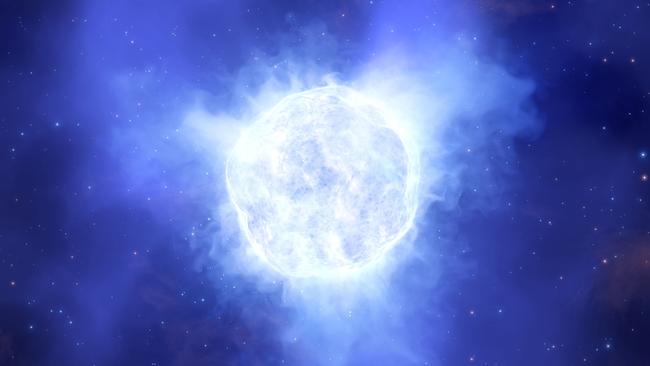Monster star goes out with a whimper
A unique glimpse of the death of one of the most massive stars in the known cosmos has suggested that these monsters end their lives not with a bang but with a whimper.

A unique glimpse of the death of one of the most massive stars in the known cosmos has suggested that these monsters end their lives not with a bang but with a whimper.
For a decade, astronomers had studied an extraordinarily rare and gargantuan star 2.5 million times brighter than our sun, in a distant galaxy in the constellation of Aquarius.
It was between 2.8 and 3.9 million years old, a mere infant in cosmic terms, but its volatile nature suggested it was in a late stage of its evolution.
For a team of scientists interested in learning more about how such objects end their existence, it was a perfect target.
Even so, their most recent observations were unexpected.
“We were surprised to find out that the star had disappeared,” said Andrew Allan, a PhD student at Trinity College, Dublin. “It would be highly unusual for such a massive star to disappear without producing a bright supernova explosion.”
One theory is that the star collapsed into a black hole without a supernova, which would have been expected.
This would be the first direct detection of such a large star ending its life like this.
“We may have detected one of the most massive stars of the local universe going gently into the night,” Jose Groh, head of astrophysics at Trinity College Dublin, said.
The star, which had a mass between 85 and 120 times greater than the sun’s, was located 75 million light years away in the Kinman Dwarf galaxy. It is too far away for astronomers to see its individual stars but they are able to detect the signatures of some of them.
The star has been losing mass as ultra-hot plasma streams from its surface, and another theory is that this material has formed a dust cloud that is blocking the light emitted from what remains of it. If this is the case, the dust should be detectable as it heats.
The Hubble space station is due to observe the Kinman Dwarf galaxy to untangle the mystery.
The Times


